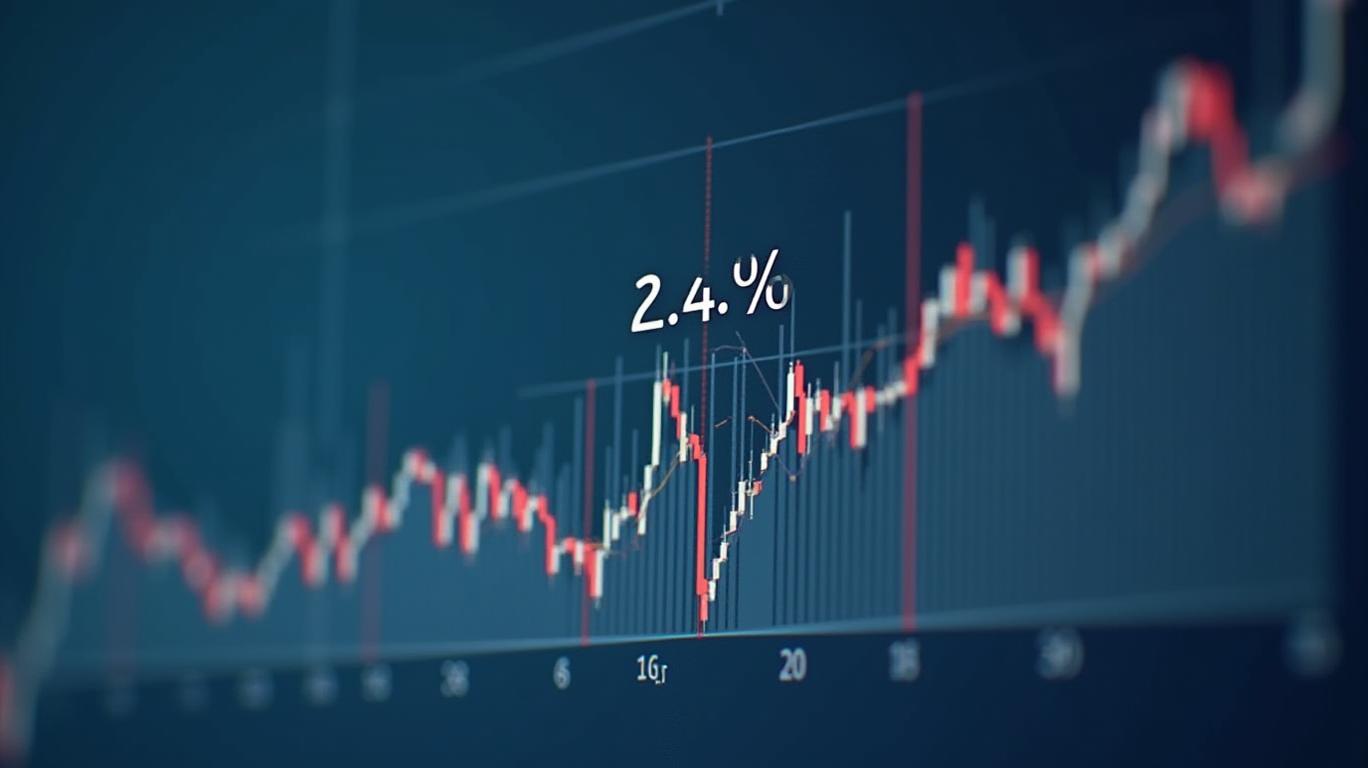Australia's Inflation Holds Steady at 2.4% in Q1: Service Sector Softens, But Risks Linger
The Reserve Bank of Australia (RBA) reported that headline inflation remained stable at 2.4% in the first quarter of 2025, with services inflation easing to 4.3%—its third consecutive quarterly decline since peaking at 6.3% in mid-2023. While this slowdown in service-sector price pressures offers a glimmer of hope for policymakers, underlying risks—from labor market tightness to global trade tensions—suggest caution is warranted.

The Service Sector Dip: Drivers and Mitigants
The moderation in services inflation is primarily attributed to two factors: rental price adjustments and government interventions.
1. Rental Prices: A Mixed Picture
Rental costs rose 7.8% annually in Q1 2025, the fastest pace since the Global Financial Crisis. However, this figure is 1.7 percentage points lower than it would have been without the Commonwealth Rent Assistance (CRA) rebates, which were increased in September 2023. In Sydney, Australia’s most expensive rental market, prices surged 8.9%, driven by ultra-low vacancy rates.
Investors in real estate investment trusts (REITs) have benefited from rising rents, but the CRA’s dampening effect suggests caution. While rental demand remains robust, policy headwinds could limit upside for property stocks.
2. Energy and Education Subsidies
The Energy Bill Relief Fund, introduced in July 2023, slashed electricity price growth to 2.0% annually, compared to a projected 17% rise without the rebates. Meanwhile, education costs—a key component of non-tradable services—contributed to inflation but were partially offset by subsidies like the Free Child Care Subsidy, which caused temporary deflation in 2020.
3. Regional Disparities
While Sydney and Brisbane led rental growth, other regions saw more subdued increases. This geographic divergence highlights the uneven impact of housing market dynamics, creating both opportunities and risks for investors exposed to regional real estate or construction sectors.
The RBA’s Outlook: Caution Amid Moderation
The RBA’s February 2025 Statement on Monetary Policy underscores that services inflation is stabilizing but remains fragile. Key takeaways include:
- Labor Costs:
- Private-sector wage growth is slowing but remains elevated, with public-sector wages rising due to collective agreements.
If labor markets soften further, services inflation could drop more sharply. However, the RBA warns that overestimating labor market slack could lead to persistent upward pressures.
Policy Withdrawal:
The unwinding of cost-of-living subsidies (e.g., electricity rebates) will temporarily boost headline inflation in late 2025. However, the RBA expects underlying inflation to stabilize near the midpoint of its 2–3% target range by late 2026.
Global Risks:
- Escalating U.S.-China trade tensions could disrupt supply chains and reduce demand for Australian service exports (e.g., education, tourism).
- A weaker Australian dollar could offset these risks by making exports cheaper, but import price pressures might negate gains.
Investment Implications
The data paints a nuanced picture for investors:
- Defensive Plays:
- Utilities and energy stocks (e.g., Origin Energy) may face headwinds as subsidies expire, but their stable cash flows remain attractive.
Healthcare providers (e.g., Healthscope) could benefit from rising demand amid aging populations, though labor shortages in this sector pose risks.
Cyclical Opportunities:
- Education stocks (e.g., James Cook University) may see volatility due to policy shifts, but long-term demand for international education remains strong.
Insurance companies (e.g., IAG) could face margin pressure from inflation but benefit from rising premiums in tight rental markets.
Risk Management:
- Investors should hedge against trade-related volatility by diversifying into global equities or commodities.
- Monitor rental vacancy rates as a leading indicator of housing market health.
Conclusion
Australia’s inflation stability in Q1 2025 is a testament to targeted policy measures, but services inflation remains a wildcard. While rental and energy subsidies have slowed price growth, the 4.3% services inflation rate still outpaces the RBA’s target, and risks like labor cost rigidity and trade wars linger.
The RBA’s cautious stance—keeping the cash rate on hold at 4.10% since November 2024—suggests no immediate easing. For investors, this calls for a balanced portfolio: allocate to defensive sectors while keeping an eye on policy shifts and geopolitical developments. With services accounting for over 60% of Australia’s GDP, the path to sustained inflation control hinges on navigating these crosscurrents.
In short, Australia’s inflation story is far from over. Stay vigilant, but don’t bet against the resilience of its service-driven economy—yet.










